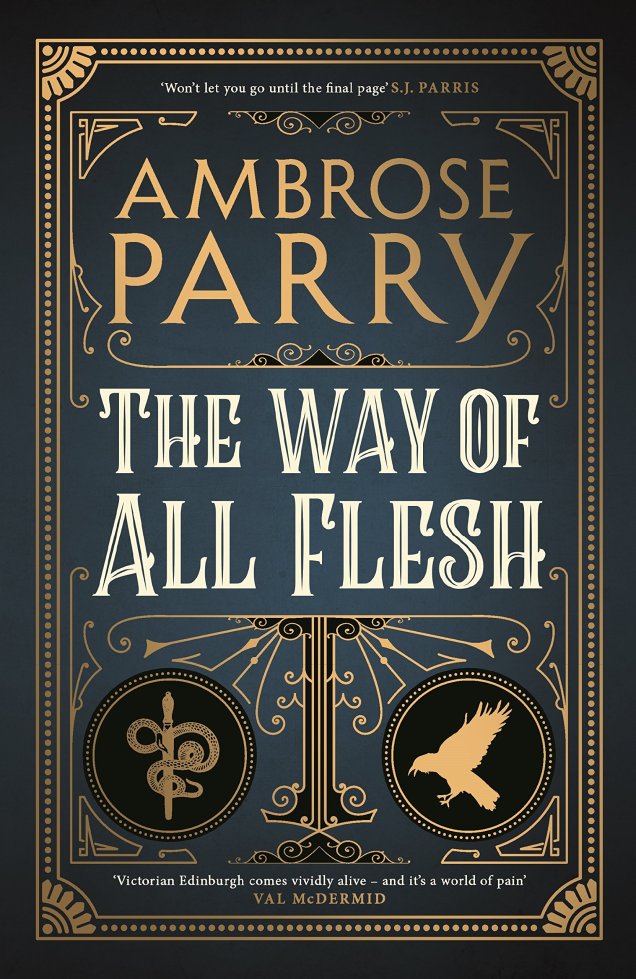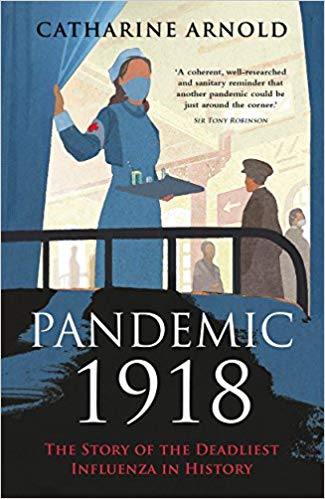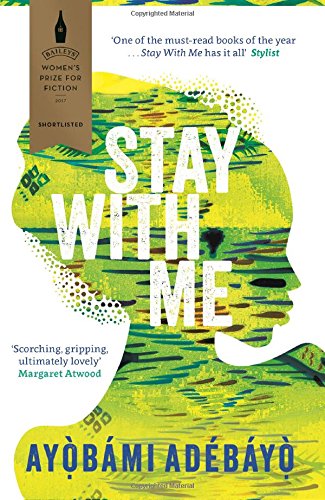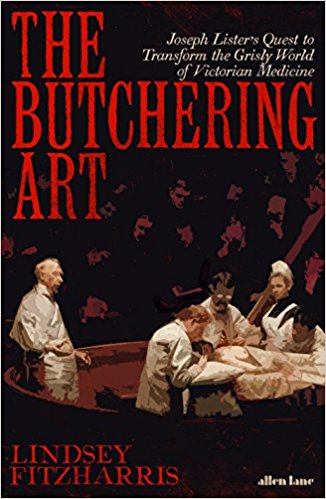
My bookshelves are piled high with brand new books, fiction and non-fiction, so much so that I really truly do not need to buy a book again until mid 2020. However, that doesn’t mean I cannot borrow books? Right? Two days after I vowed to read my huge medicine TBR list, I just happened to walk out of my local library with ‘The Way of All Flesh’, the BRAND NEW debut novel by Ambrose Parry, a pseudonym for husband and wife duo Chris Brookmyre and Marisa Haetzman. To be honest with you, all it took was two phrases, new anaesthesia and 19th century medicine to change my mind.
Edinburgh, 1847. Will Raven starts his apprenticeship with Dr Simpson, a renowned surgeon specialising in midwifery and obstetrics. He soon gets pulled into not only the world of midwifery, but Simpson’s quest to find a reliable and safe form of anaesthesia. However, Raven, along with housemaid Sarah also find themselves investigating the brutal murders of young women in the city. How did they die, who killed them and for what purpose?
Carefully entwined within the gory and unsettling are a plethora of medical themes, all explored with both enthusiasm and historical accuracy. 19th century Edinburgh was one of Britain’s hubs of medical teaching and discovery – its prominence coincided with the emergence of the 19th century medical marketplace, which in effect offered consumers a wide variety of medical options. Therefore throughout the novel, the reader learns of the advantages and disadvantages of quackery, homeopathic and hydropathic medicine and of course, the quest for a safer and painless surgical procedure via anaesthesia. Personally, the amalgamation of all aspects of 19th century medical history in one novel focused on the advancement of medicine, pleased me most whilst reading. As medical historians, we are often taught one epoch in history per week/module – Parry’s work brought all our knowledge together into a tangible demonstration of 19th century medical life.
Saying that, you do not need one jot of medical history knowledge to enjoy this novel. As Will Raven is an apprentice, the reader learns what he learns. The principles and methods of surgery, anaesthesia and midwifery are as new to Will as they are to the reader – Raven explains these principles through his experiences. These experiences can be as simple as a short conversation between Raven and Dr. Simpson, a room full of Drs trialling new forms of anaesthetic, or a live surgical procedure performed theatrically. The reader witnesses these events through the eyes of a new, fresh Dr, ready and willing to learn.
If you want a good book that transports you back to the 19th century, whilst not even leaving your house, The Way of All Flesh is definitely for you. Easy to read, historically accurate and gripping until the very last page – believe me, I devoured the last 50 pages at a rate of knots due to all the twists and turns – Ambrose Parry’s debut novel showcases the best and worst of 19th century medical advancement and practice. Do you think the library will mind if I keep this forever? On loan of course!


